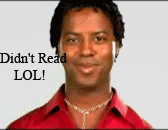Name: Memento_Mori
Location: Zurich
Posts: 4981
Location: Zurich
Posts: 4981
So, here I am trying to make this column worth reading, perfectly knowing what the expectations of this community are: “better of the best, otherwise it’s a waste of time”.
During the IEM Finals I had to chance to talk to Chance, about his bible, and the next guide he would like to write, and this was the beginning of a line of thoughts, that I hope I can capture here, provoking your feedback.
The first question I asked myself was “Is there a best way to write a guide?”. This was an easy question to answer. If you look around there are many guides about duel which show a variety of styles and approaches. Likely, the answer is no, there is no “best” way.
However, in many guides I read, I noticed confusion in three very important aspects:
1) Who is the intended audienceThese points are a crucial factor which can make the difference between a successful guide and some ok writing. Let’s consider briefly the individual points.
2) What is the goal of the guide
3) What is the guide perspective
The first trap writing a guide is to being loose about the intended audience. Ideally, the perfect guide is for everybody and manages to get deeper and deeper into the concepts so that very experienced players find it interesting. Well, forget about the ideal world. If you don’t define the intended audience in a precise manner, you are going to embark in and endless work with no hope of delivery, likely ending up with something that, to the least, feels confused.
The goal of a guide can be diverse; from the general intent of increasing the community knowledge of a topic, down to a step by step tutorial on how to do bridge rail in dm6. Now here is the real mess; there are just too many topics that are possible, and the task feels overwhelming. One help comes from the point above, as the intended audience defines what knowledge can be assumed as granted, what is out of scope as it’s too difficult, and finally what is a good topic for the guide.
But what really makes a guide a proper guide, is the careful selection of the perspective(s) in which the topics are presented. This one, in particular, is a weak spot of many of the guides I read. The beauty of a perspective, is that once it’s defined, it tells you how a topic should be described, what should be written so that the reading is consistent, and what is not inherent with the current writing and should avoided. To exemplify, let’s pick three different perspectives (which coincidentally are the ones I want to promote within this column):
1) Agent perspective
2) Why perspective
3) How to perspective
The agent perspective (or “what” perspective) describes the behavior of a player with a view to assess its effect on the game. Example: the player on top of bridge jumps to rail, preparing for harassment of the opponent, currently controlling the map. Notice how we are not specifying how he is doing that, nor why that particular choice makes sense in that context. The power of this perspective is that it defines behaviors, gives a name to things, which is the first step in understanding the game. To stress this point, think of a newbie watching a demo; he will have a hard time recognizing what the players are doing, and will miss most of the information the demo contains. At the same time, a good caster has the ability to highlight a particular behavior, naming it appropriately, potentially creating an information item that the audience will from now on use while reasoning about the game.
The why perspective addresses what can is sometimes called meta-game. In the example above: the player need to grab a rail because he wants to weaken the opponent without taking damage, so that with similar stacks he can challenge the next item. Notice how again, this perspective has no notion of how the jump is done, or – for example – where the player has to stand before exposing himself in the jump to make sure he can hear if the opponent is approaching.
In theory, a guide that contains both the agent and the why perspective is a guide that makes you a better spectator. In fact, a spectator is entertained because he can recognize what the players are doing and why they are doing so, appreciating tactical choices and smart decisions.
There is however one component missing; execution. While as spectator you appreciate execution effortlessly, as a player, execution is very big deal. This is the domain where the “how to” perspective comes into play. When you want to jump from bridge to rail, you first have to know how to perform the jump, than you need to know what to look for to make sure the operation is safe and the opponent is not setting a trap, nor appearing while you are in the air with a shaft in his hands. This perspective is possibly as complex as the other two if not more, but on top of that it suffers from a few hindrances at the exposition level:
1) While many concepts at the agent and why level are general enough, most of the how to information is map specific.In the recent years, video guides started appearing. However most of them are related to movement. In the lesson I took with Stermy, he would go to a certain spot and tell me stuff like “position yourself here, but not there because you won’t have a good angle on that opening” or “walk here so that you can hear the item pickup without being exposed”. An effective guide at this level would make use of videos, with voice or text commentary. In practice, very little has been done at this level. The task is very demanding due to the sheer amount of hints (per map), and the energy a video production requires.
2) This kind of knowledge is difficult to be explained in words, making a text based guide not suitable.
So, what is a good guide?
To recap, a guide should have a clear intended audience, so that the workload to produce it is sustainable. It should have a clear goal in mind, so that precise content is presented, and references among guides are effective, allowing the construction of a global – non redundant - knowledge within the community. And finally it should make use of specific perspectives which are best suited to expose the content.
Edited by Memento_Mori at 08:04 CDT, 26 March 2010 - 6185 Hits



Just like in real world presentations clear articulation and appropiate talking speed make it a lot easier to actually process the info that is given. this of course is a question of professionalism.
Also, as you said, making a video guide that is actually worth something requires a huge amount of effort, especially if it's done by one single person.
That being said, video guides could definitely be much more effective than a simple text and it's unfortunate that there aren't any decent ones around. (Speaking for duel, nvc's tdm guides weren't too bad) Maybe this is something that the esl should consider, pretty sure 2GD could come up with something good if they gave him the time to work on it.
I think they had "guide shows" for other games in the past, so why not do this for quake?